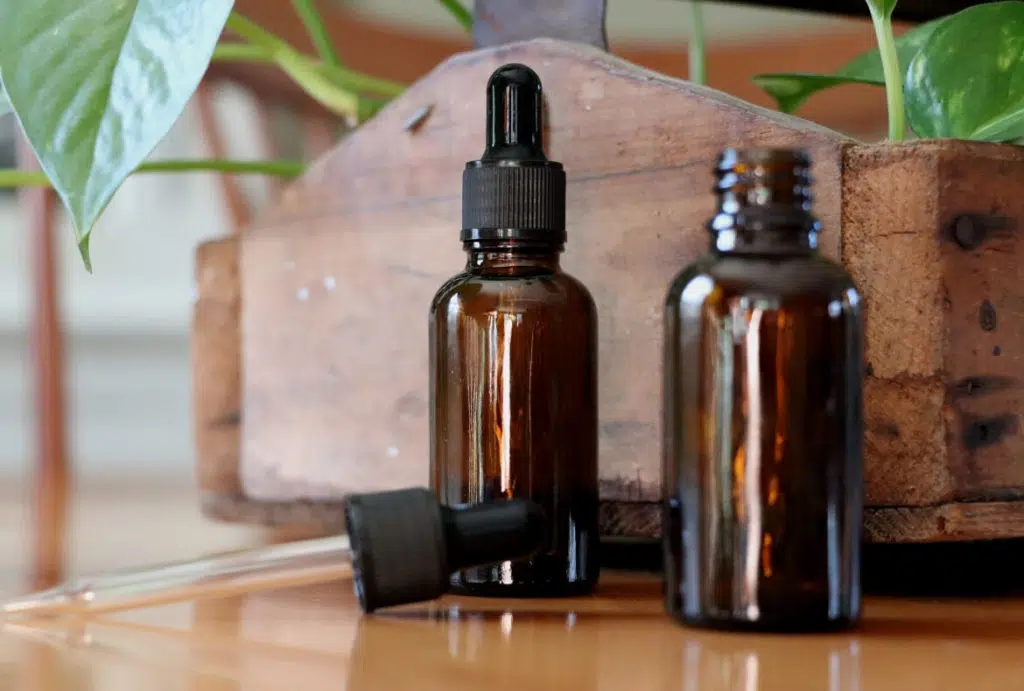
Author: Michelle Mansfield-Hom, CH
Weaving herbs into your lifestyle can be a lifelong investment and support for your own physical, mental, emotional well-being. If you like herbs, you might already be familiar with herbal infusions (or teas) and using herbs as culinary spices. You might be also curious to dabble into the realm of herbal extracts, also known as tinctures.
Tinctures are concentrated herbal extracts, but not all herbal extracts are tinctures. A herbal tincture has to be prepared with pure grain-based alcohol alongside distilled or spring water for dilution. If you are using another form of menstruum (a liquid solvent) such as vinegar, glycerite, honey, or assorted oil such as olive oil, your medicine is an extract but not a tincture. Alcohol is used to break down the plant cell walls of herbs to increase bioavailability of phytochemicals (plant derived compounds that are agents of healing).
Note: A lot of mass marketing in the health conscious-ness and wellness field has been blowing up in recent years distorting the definition of a tincture.
Historical uses of tincture
Herbal medicine has been around for thousands of years, spread all over the regions of the world. However, the earliest dated concentrated herbal extracts goes as far as distilled alcohol. Herbal tinctures and cordials (tinctures with a lower alcohol content) were made by the Ancient Egyptians (3000 BCE – 332 AD). Herbal extracts especially in wine and alcohol also make a lot of appearances in the eastern medicine, in the Asia countries. In 1-25, The Canon of Medicine was published by the Al-Qanoon GI al Tibb and explained a lot of topics including herbal tinctures. The herbal tinctures were the foundation of medicine in the West in the 12th-17th centuries during the Eclectics (the medical practitioners that use herbal medicine in clinical settings). Europe took on distilling as common practice in the 1400s-1500s and tincturing was also the general practice around that time. Up till early 1950s-1960s the pharmaceutical industry shifted away from tinctures and weighs an emphasis on pills as the widespread medicine deliverance. In the early 1900s (1920s), Cannabis was tinctured and then sold in your average pharmaceutical shop before the ban on hemp + Cannabis derived products.
In the past several years, herbal medicine and tinctures are finally regaining popularity. More people are well-researched, educated about herbal medicine. Tinctures are a convenient, quicker way to take your herbal medicine. In a modern lifestyle like nowadays, tinctures are also great for traveling and taking plant medicine when you’re on the go. These small bottles can fit in your car as long as it is not a 105 degree summer day, purses or fanny packs, and toiletries bags. You’ll be able to have your herbs in between work, day-to-day activities, and everything in between. If one wants to avoid the ethanolic aspect of tinctures, one can add dropperfuls of tincture to water and slightly warm it up to allow the ethanol to evaporate. Or dilute it in water to offset the taste. In short, tinctures are an easy way to administer your herbal medicine.
Let’s talk about medical independence. Ever think that herbal tinctures seem costly on the shelves of a local health store, apothecary, and/or health section in your grocery store? An ounce could easily cost $15 and you could easily go through it within 5-7 days if taking 2 dropperfuls, 3x a day. This doesn’t add up, in the terms of sustainability or self-sufficiency. To be self-sufficient in herbal medicine, it is oftentimes better for one to craft their own herbal medicine. In that intimate process, it is empowering to yourself and your herbal knowledge. Steps not including the part where you tincture your herbs are also picking or buying your herbs, growing your own, drying them, and then finally tincturing them. When you go through all the steps, you’ll be strapped with an extensive understanding of where your herbs came from and how they were turned into medicine. Also, tinctures have an extremely long shelf life depending on the condition they’re stored under: cool, dark, dry place in a dark tightly closed bottle. So with that, you are set up to make a bountiful supply of herbal medicine for yourself and your family for many years to come.
Maceration vs percolation
A maceration is where the marc (plant material) is finely chopped, ground to a consistent size, and/or blended in with the menstruum (solvent). Marc for macerations can be either dried or fresh plant material. Maceration can be known as the folk, slow method. The marc and menstruum are combined together and then left in a cool, dark, dry place for 2-4 weeks. The jar that holds your future herbal medicine can be agitated every now and then for better extraction.
A percolation is a slightly more complex methodology but quicker. This involves more mathematical elbow grease and a percolation cone. Marc for percolation has to be dried plant material and ground up into a consistent size. Then the marc is packed into a percolation cone sitting over another vessel. Menstruum is poured over the marc and the output looks much like a drip and you control the drip flow ensuring that there is a drip every other 2-4 seconds. This methodology can give you a concentrated herbal extract within 24 hours.
